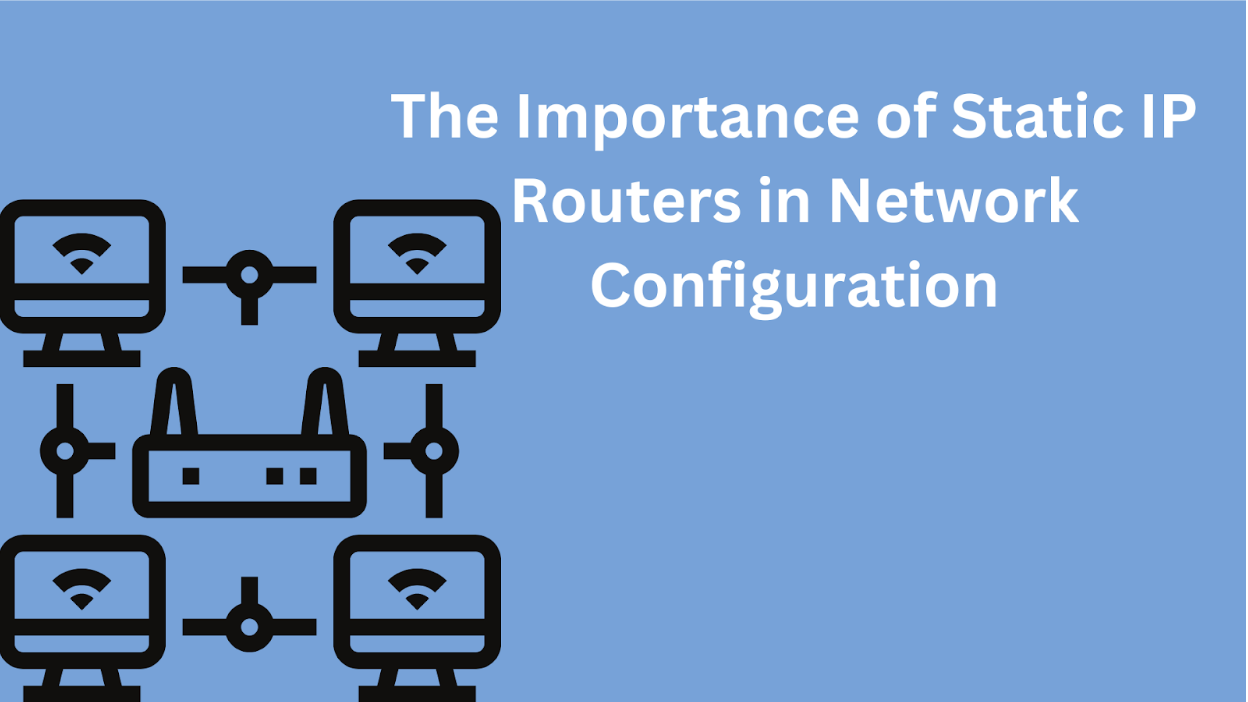In networking, the term "static IP router" often appears, especially in network configuration and management discussions. But what exactly is a static IP router, and why is it so important? Let's delve into this topic to understand its significance.

What is a Static IP Router?
A static IP router, also known as a static router, is a device that forwards data packets between computer networks. Unlike dynamic routers, which use dynamic routing protocols to determine the best path for forwarding packets, static routers use manually configured routing tables.
Why Use a Static IP Router?
Static IP routers offer several advantages, making them a preferred choice in certain network setups:
With a static IP router, network administrators can manually configure the routing table, ensuring that data packets are forwarded along predetermined paths. This predictability is crucial for maintaining a stable network environment.
Static IP routers are less susceptible to certain types of network attacks, such as IP spoofing, which can occur with dynamic routing protocols. Administrators can better control the data flow within their networks by using static routes, enhancing security.
Dynamic routing protocols, while efficient, can introduce additional network overhead due to their continuous updating and maintenance. Static routing eliminates this overhead using fixed routing tables, improving network performance.
Quality of Service (QoS) ensures that critical network traffic, such as VoIP or video conferencing, receives priority over less important traffic. Static routing allows administrators to prioritize traffic based on predefined rules, enhancing QoS management.

Implementing Static IP Routers
To implement a static IP router, network administrators typically follow these steps:
- Configure Routing Tables
- Verify Configuration
- Monitor and Maintain
Conclusion
Static IP routers are crucial in network configuration, offering predictability, security, and improved performance. Network administrators can effectively manage and optimize their networks for better efficiency and security by understanding how static IP routing works and its advantages.
FAQs
1. What are the main differences between static IP routers and dynamic IP routers?
Static IP routers use manually configured routing tables, while dynamic IP routers use dynamic routing protocols.
Static IP routers offer predictability and improved security, while dynamic IP routers are more flexible and can adapt to changing network conditions.
2. Can a device have both a static and dynamic IP address?
Yes, a device can have both a static and dynamic IP address. For example, a server may have a static IP address for certain services and a dynamic IP address for general internet access.
3. How do I troubleshoot issues with static IP routing?
To troubleshoot issues with static IP routing, check the routing table for errors, verify network connectivity, and ensure that the correct routes are configured.
4. Are static IP routers suitable for large-scale networks?
Static IP routers can be suitable for large-scale networks but may require more manual configuration and maintenance than dynamic routing protocols.
5. Can I use static IP routing with other routing protocols?
Yes, static IP routing can be used with other routing protocols, such as OSPF or BGP, to provide additional routing capabilities and redundancy.